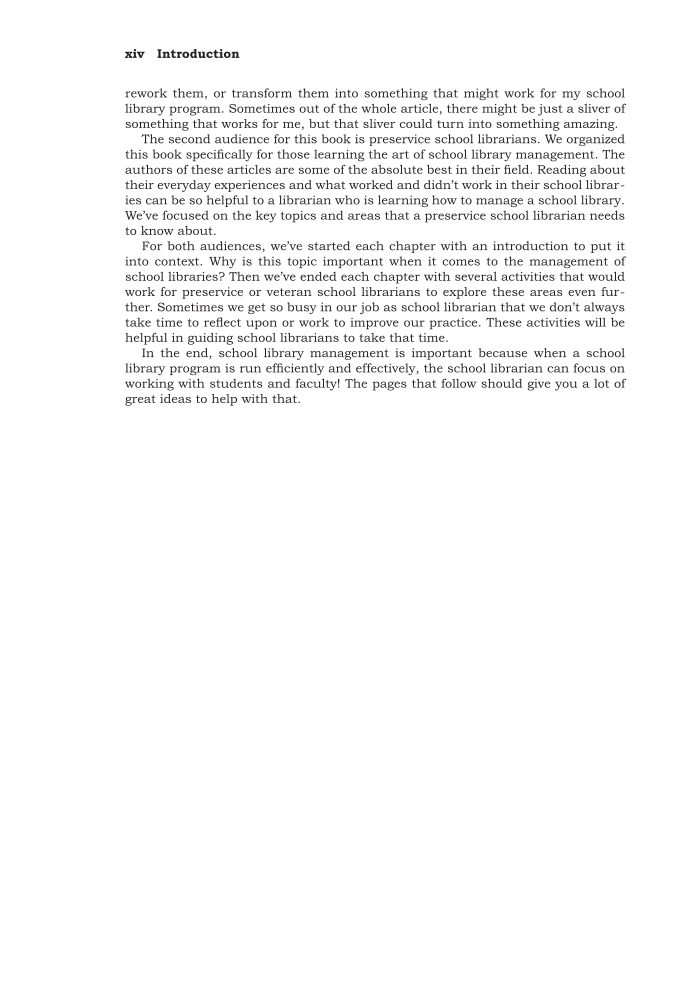xiv Introduction rework them, or transform them into something that might work for my school library program. Sometimes out of the whole article, there might be just a sliver of something that works for me, but that sliver could turn into something amazing. The second audience for this book is preservice school librarians. We organized this book specifically for those learning the art of school library management. The authors of these articles are some of the absolute best in their field. Reading about their everyday experiences and what worked and didn’t work in their school librar- ies can be so helpful to a librarian who is learning how to manage a school library. We’ve focused on the key topics and areas that a preservice school librarian needs to know about. For both audiences, we’ve started each chapter with an introduction to put it into context. Why is this topic important when it comes to the management of school libraries? Then we’ve ended each chapter with several activities that would work for preservice or veteran school librarians to explore these areas even fur- ther. Sometimes we get so busy in our job as school librarian that we don’t always take time to reflect upon or work to improve our practice. These activities will be helpful in guiding school librarians to take that time. In the end, school library management is important because when a school library program is run efficiently and effectively, the school librarian can focus on working with students and faculty! The pages that follow should give you a lot of great ideas to help with that.
Document Details My Account Print multiple pages
Print
You have printed 0 times in the last 24 hours.
Your print count will reset on at .
You may print 0 more time(s) before then.
You may print a maximum of 0 pages at a time.











































































































































































































































































































































